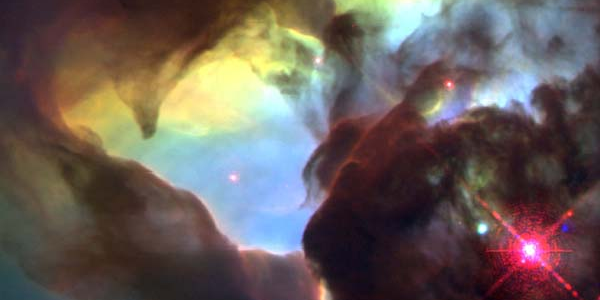| item 1 |
Integer. The index number for this level. The line file uses
this index to refer to a specific level.
|
| item 2 |
String. The electronic configuration of the level. |
| item 3 |
Integer. The number used to identify this electronic
configuration. Configurations are numbered sequentially with
increasing energy (based on the lowest level for a given
configuration). Note that this number may change from one release
to the next.
|
| item 4 |
String. The term of the level. Note that this field is only
included to make the file human-readable and is not used otherwise.
|
| item 5 |
Integer. The number used to identify this term. Terms are
numbered sequentially with increasing energy (based on the lowest
level for a given term). Note that this number may change from one
release to the next.
|
| item 6 |
Boolean. True if this level is part of the ground term. |
| item 7 |
Boolean. True if this level is metastable. |
| item 8 |
Character. An additional character used to disambiguate terms in
older publications (e.g., the 'a', in the ground term a6D of Fe II).
An asterisk indicates that no such identification is used for this
term.
|
| item 9 |
Integer. The first quantum number of the term. This represents L
for LS and LK coupled levels, 2*j+1 for jK coupled levels, and
2*j1+1 for jj coupled levels.
|
| item 10 |
Integer. The second quantum number of the term. This represents
2*S+1 for LS coupled levels, 2*K+1 for LK and jK coupled levels,
and 2*j2+1 for jj coupled levels.
|
| item 11 |
Integer. An additional quantum number used to disambiguate terms
in partially filled d or f shells. It is either
the seniority index used in the parentage scheme notation, or the
additional index introduced in the Nielson-Koster notation. There
is currently no easy way to distinguish between the two notation
schemes. A value -1 indicates that this additional quantum number
is not used for this term (which is the case for most terms).
|
| items 12, 13 |
Integers. These two numbers indicate the range of J values
associated with the level, represented as a statistical weight g =
2*J+1. Usually only one g value is associated with the level, in
which case the two numbers are identical. In some cases two or
more levels in a term have indistinguishable energies, in which
case a single entry may be used with a range of g values:
glo–ghi. In that case all levels with statistical weights
glo, glo+2, ..., ghi are represented.
|
| item 14 |
Integer. The parity of the wave function. A value 0 indicates even
parity, and 1 indicates odd parity.
|
| item 15 |
Boolean. True if the term was marked uncertain, or is unknown.
|
| item 16 |
String. The coupling scheme used for the term. Allowed values
are LS, LK, jK, and jj. A value ** indicates that no valid coupling
scheme could be determined.
|
| item 17 |
Integer. The highest value of the principal quantum number
n for any of the electrons in the configuration.
|
| item 18 |
Floating point number. The energy of the level in cm-1.
|
| item 19 |
Floating point number. The uncertainty in the energy of the level
in cm-1. In older publications this number is usually not
included, in which case it was estimated from the number of
significant digits printed.
|
| item 20 |
Integer. A set of boolean flags in hexadecimal notation. Each bit
has a specific meaning as specified below. Multiple flags can be
combined using the boolean or operator.
| 0001 |
The level energy comes from a theoretical calculation. |
| 0002 |
Reserved. |
| 0004 |
Reserved. |
| 0008 |
Reserved. |
| 0010 |
Sometimes laboratory experiments cannot identify sufficient
lines to connect all levels together. You then get two or more
groups of levels with accurate energy differences between levels
in the same group. But the energy difference between the various
groups is highly uncertain (and usually comes from ab initio
calculations). The energies of the levels in the group that does
not include the ground level are then marked with "+v", "+w", "+x",
"+y", or "+z" (so up to 6 unconnected groups are supported). This
specific flag indicates that the level was marked with "+v". Note
that in some papers this notation is misinterpreted as meaning:
this level energy has a large uncertainty. |
| 0020 |
Same as 0010, but the level was marked with "+w". |
| 0040 |
Same as 0010, but the level was marked with "+x". |
| 0080 |
Same as 0010, but the level was marked with "+y". |
| 0100 |
Same as 0010, but the level was marked with "+z". |
| 0200 |
The level energy was marked uncertain with a question mark. |
| 0400 |
This is not a real level, but a superlevel representing
all levels with the same principal quantum number n
in hydrogenic ions. |
| 0800 |
This is not a real level, but an ionization limit. |
| 1000 |
This is not a valid level, and is not used in the line list. There
can be many reasons why the level was marked invalid. There may
be incomplete information, or some of the provided information
may be wrong (e.g., the LS-J combination may be forbidden by
angular momentum addition rules). |
|
| item 21 |
Integer. The number of the literature reference for this level.
|



